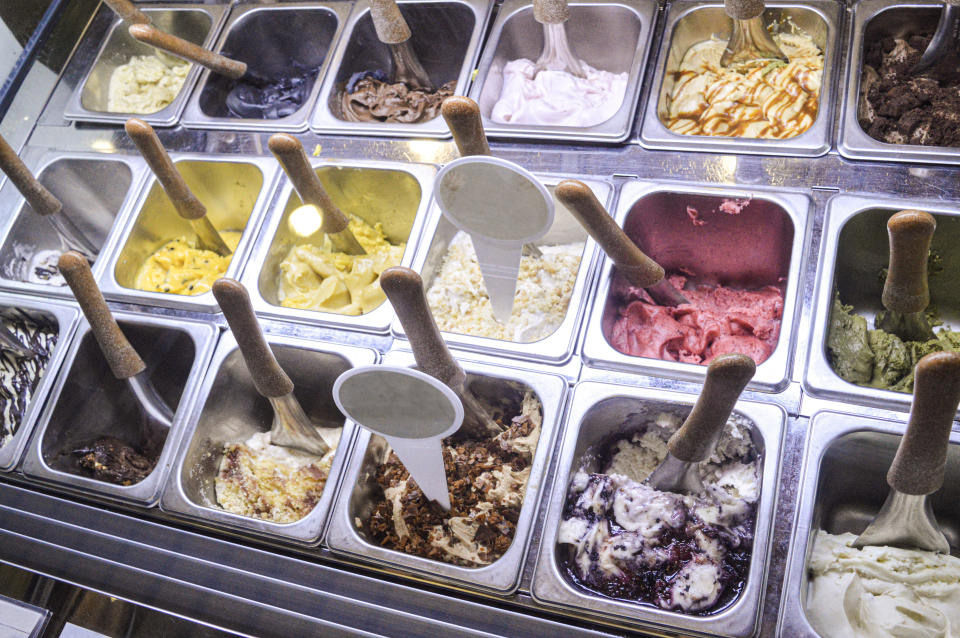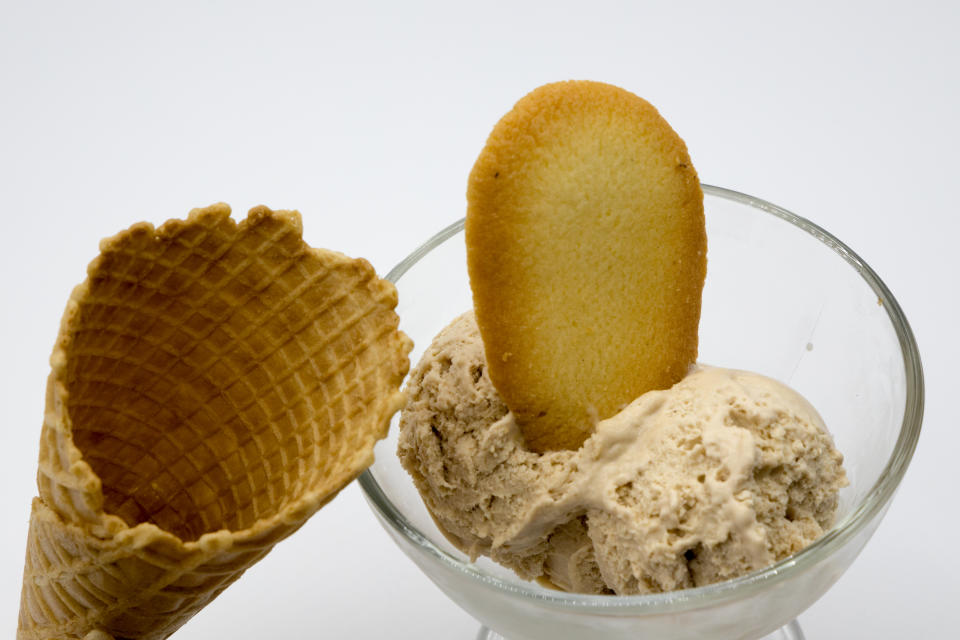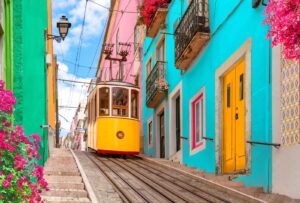Living in Italy we learned the secret to picking the best gelato
7 min readHere are two hills I will die on: gelato is better than ice cream, and gelato in Italy is better than anywhere else in the world.
The first time I had real Italian gelato, it was on my first trip to Italy, which was only for a couple of days in 2001. I distinctly remember thinking, “This stuff is fantastic! But would it taste as good without Trevi Fountain splashing away in front of me?”
Years later, in 2018, Michael and I lived in Italy for the first time. Naturally, we had gelato almost every day for a month.
And I quickly realized, “Yup! It tastes just as good even apart from the majesty of Rome.”
ADVERTISEMENT
Advertisement
One night, after a particularly good gelato, I asked Susanna, one of my new Italian friends, “Why does Italian gelato taste so good? I’ve had lots of gelato in lots of different countries. Ice cream too. But it never tastes this good. What’s the secret?”
Susanna nodded sagely, as if my opinion of Italian gelato was simply objective fact. “You must start with fresh, local ingredients,” she told me. “And you must never skimp on the flavors. There are so many more peaches in peach gelato than you might think. But that’s as it should be. The point is to make peaches that taste like gelato, not gelato that tastes like peaches.”
Don’t you just love the way Italians talk about food?


What’s the difference between gelato and ice cream?
Ice cream is made with sugar, cream, and egg yolks, but gelato is generally made with whole milk, or milk and cream, and no egg yolks. Gelato is also churned much slower, so there is less air whipped into it, and is chilled but not frozen solid.
ADVERTISEMENT
Advertisement
The end result is smoother and denser than ice cream, more intense, and served at a warmer temperature, so the tongue is able to register more of the flavor. A little gelato goes a long way.
Meanwhile, ice cream is colder with more fat and whipped air. The fat and cold tend to overwhelm the taste buds, but along with all that air, they also make ice cream easier to eat in large quantities.
Or, as they said in The Good Place on the subject of frozen yogurt: “There’s something so human about taking something great and ruining it a little so you can have more of it.”
Michael and I are living in Italy again, in the town of Como on Lake Como, and I have obviously become a full-fledged gelato snob. But I’ve also learned a few things — especially that not all Italian gelato is equally good.
Here’s how to know what’s great, what’s good, and what should probably be avoided, even if it’s being sold next to the Trevi fountain in Rome.
ADVERTISEMENT
Advertisement
Nutshell? The key to good gelato is that it isn’t mass-produced: not delivered in bulk or made from a mix. The more local it is and the better the ingredients, the better the gelato is almost certain to be.
Here are the specifics, including some commentary from Facu, a new friend we’ve made here in Italy and a big gelato aficionado.
How is it stored?
Counter-intuitively, the best gelato is often the stuff you can’t see, kept in covered containers. These gelateria are so confident in their product they don’t need to dazzle you with bright colors and colorful syrup drizzles. These containers also keep the gelato at the perfect temperature, which is important for flavor.
Most gelato is sold from shallow, lidless metal tubs that are stored in refrigerated glass cases, which is also a perfectly acceptable way to sell it.
ADVERTISEMENT
Advertisement
But it’s also common in Italy’s heavy tourist areas to see gelaterias where the gelato is heaped up over the lip of the bin, sometimes even in huge mounds. This is a sign that the gelato includes additives like vegetable oils or emulsifiers, or it has been frozen — both indications of lower quality.


How does it look?
Once again, looks can be deceiving. The best gelatos are not brightly or vividly colored; in fact, super bright colors can indicate the presence of food color or dyes that could be disguising the lack of real fruit or nuts. A bright yellow banana flavor is a bad sign.
In general, gelato should look like its actual flavor. Pure pistachio gelato, for example, is brown-ish. Sure, some gelaterias might add a greenish tint, but a vibrant green is another bad sign. Likewise, a bright green mint.
ADVERTISEMENT
Advertisement
Meanwhile, don’t get too distracted by the pretty stuff on top.
“I tend to avoid flavors that have some embellishment on top, such as Oreo cookies, the corresponding fruit, nuts, hazelnuts, mint leaves, or chocolate pieces,” Facu says. “The ingredients should be used for making the flavor and, as such, properly blended into the mix.”
Check the temperature.
When it comes to gelato, temperature really is very important. When served, it should be neither completely frozen nor already melting. It also shouldn’t be glassy.
“Finding ice crystals in your gelato is bad,” Facu tells me, “because it means it melted at some point and then refrozen, or it was poorly made in the first place.”
In fact, if you find ice crystals in your gelato, you should refuse it, as it might very well be spoiled.
How is it served?
The consistency of gelato is also very important: because it should be denser than ice cream, it’s best scooped with a flat metal spade, not a traditional ice cream scoop.
ADVERTISEMENT
Advertisement
Meanwhile, gelato should absolutely be served in a cone, not a cup, although I concede that’s just a peronsal preference and not an indication of quality.


Note the fruit flavors
Fruit and berry flavors should definitely look like it’s made from actual fruit and berries. Indeed, look for seeds, pulp, or skin, which are good things because they indicate that real food is being used in substantial quantities.
“I tend to avoid hybrid fruit flavors, such as orange-strawberry or mango-peach,” Faco says, “as they usually use a little bit of the leftovers to make these things, but this is more on the personal side.”
Meanwhile, the best gelaterias use quality local ingredients, which means mostly seasonal fruits and berries. Sure, they may keep really popular flavors on hand year-round, but if they have every fruit flavor imaginable, this is a sign that you’re patronizing a place that’s using mixes or bulk deliveries — especially if the fruits come in unnatural colors.
ADVERTISEMENT
Advertisement
Incidentally, fruit-flavored gelato is often made without milk (and is technically not gelato at all, but sorbetti). But some fruit flavors are made with milk, and this is also totally acceptable.
Do they have unusual flavors?
Another good indicator of quality? Unique flavors, or ones that are difficult to find.
“It tends to be a nice indicator of quality, as it indicates their own production and dedication to their business,” Facu tells me.
Here in Como, Facu says, there is even a place that has “olive oil” flavor gelato, which I have no interest in trying, but they get points for originality! Another shop has won awards with its uva fragola, or grape gelato.
The most expensive gelato flavor to produce is hazelnut, or nocciola, and if they offer it without added chocolate, this is a very good sign of quality.
ADVERTISEMENT
Advertisement
This is also my personal favorite flavor, an absolute taste sensation.


Check the ingredients
Italian gelaterias often post their ingredients — and it’s a good sign when they do: a quality gelateria will be proud to show off their fresh, local, quality ingredients.
Ingredients to look out for? Olio vegetale (or vegetable oil) or artificial colors and flavors (which are often indicated by numbers or letters).
One very popular Italian flavor is frutti di bosco, which means “fruit of the forest” and is typically made from whatever berries or cherries are in season. This is a good way to tell if your gelatario (or gelato-maker) is using local, seasonal fruits.
Try a sample of the fior di latte or fior di panna
These are the most basic flavors of gelato, offered by most premium gelaterias: fior di latte means “flower of the milk,” and fior di panna means “sweet cream.” They’re generally made with the highest quality milk or cream, and the flavor can be very subtle, like a very mild vanilla.
ADVERTISEMENT
Advertisement
If neither of these flavors is offered, this is a bad sign. But it can also be a bad sign if the flavors include chocolate chips, or pieces of fruit, or are drizzled in syrup. It might mean they’re trying to disguise lower-quality cream or milk.
“I do not like this practice,” agrees Facu. “I don’t like the fact that they are using the cream as the base and the syrup to provide the flavor.”
A respectable gelateria will allow you to sample their wares, and the fior di latte or fior di panna are good choices to try to discern overall gelato quality, even if neither is the flavor you finally choose.
Overwhelmed? Ignore me.
Look, I’ve already admitted I’ve turned into a gelato snob, and we all know that nothing sucks the joy of something faster than someone being a snob about it.
In short, I’m giving you permission to take whatever makes sense from everything I’ve written here — and completely ignore the rest. In the end, the whole point of gelato is to enjoy it.
So enjoy it!
If you’re ever in doubt, just get the chocolate — either cioccolato fondente (without milk) or cioccolato al latte (with milk). I think we can all agree it’s hard to screw up too badly when you’re making something out of chocolate.
We’re a longtime couple who decided in 2017 to sell our house in Seattle and travel the world as “digital nomads.”
Subscribe to our newsletter to come along to the places we’re going next!




